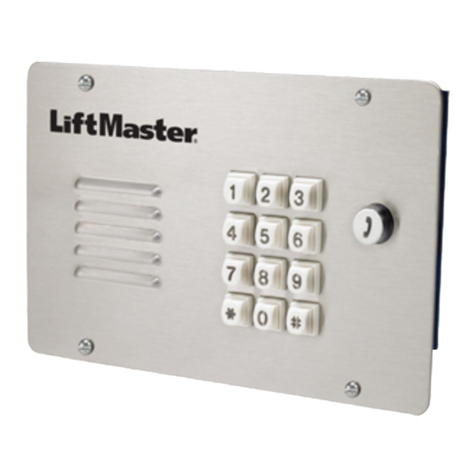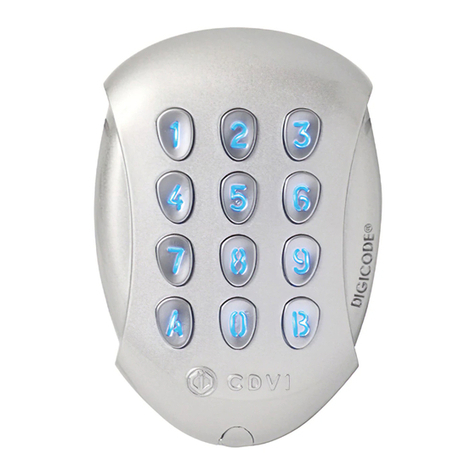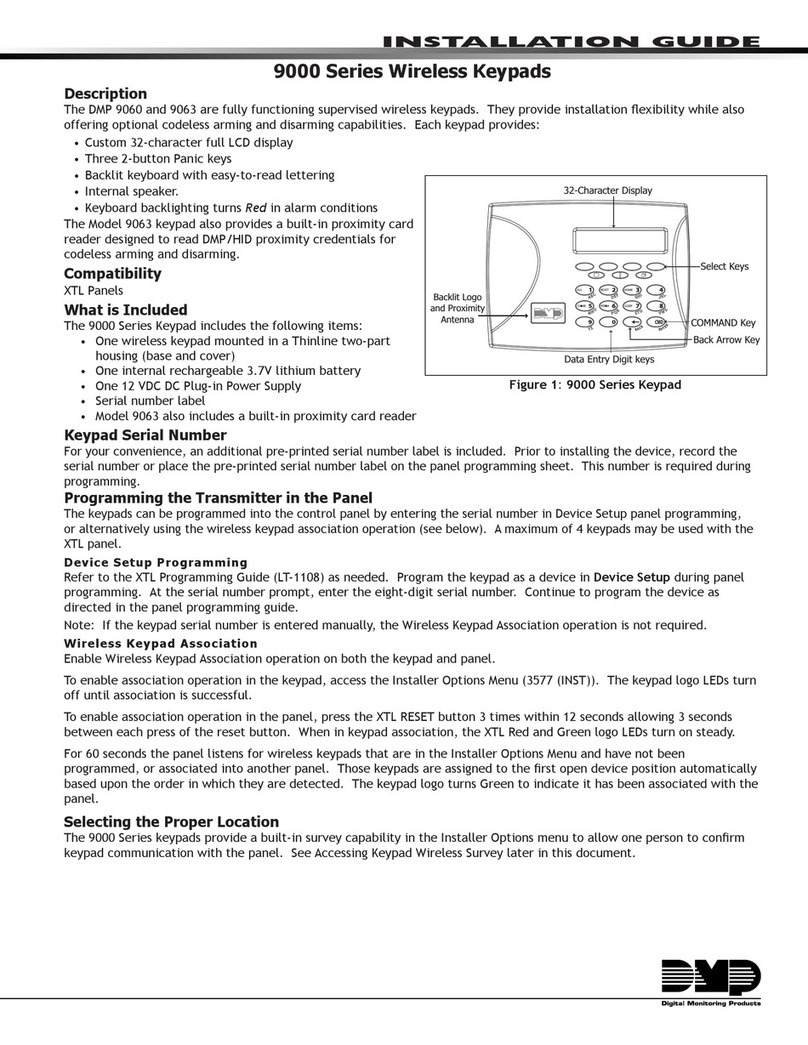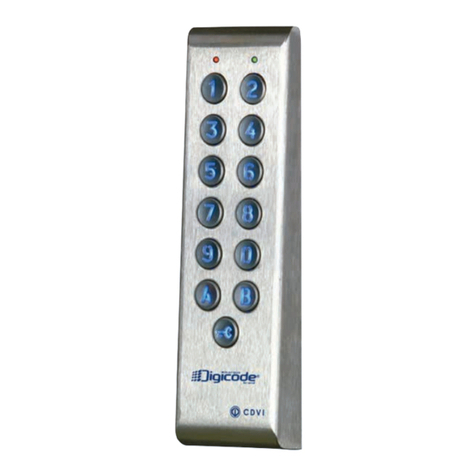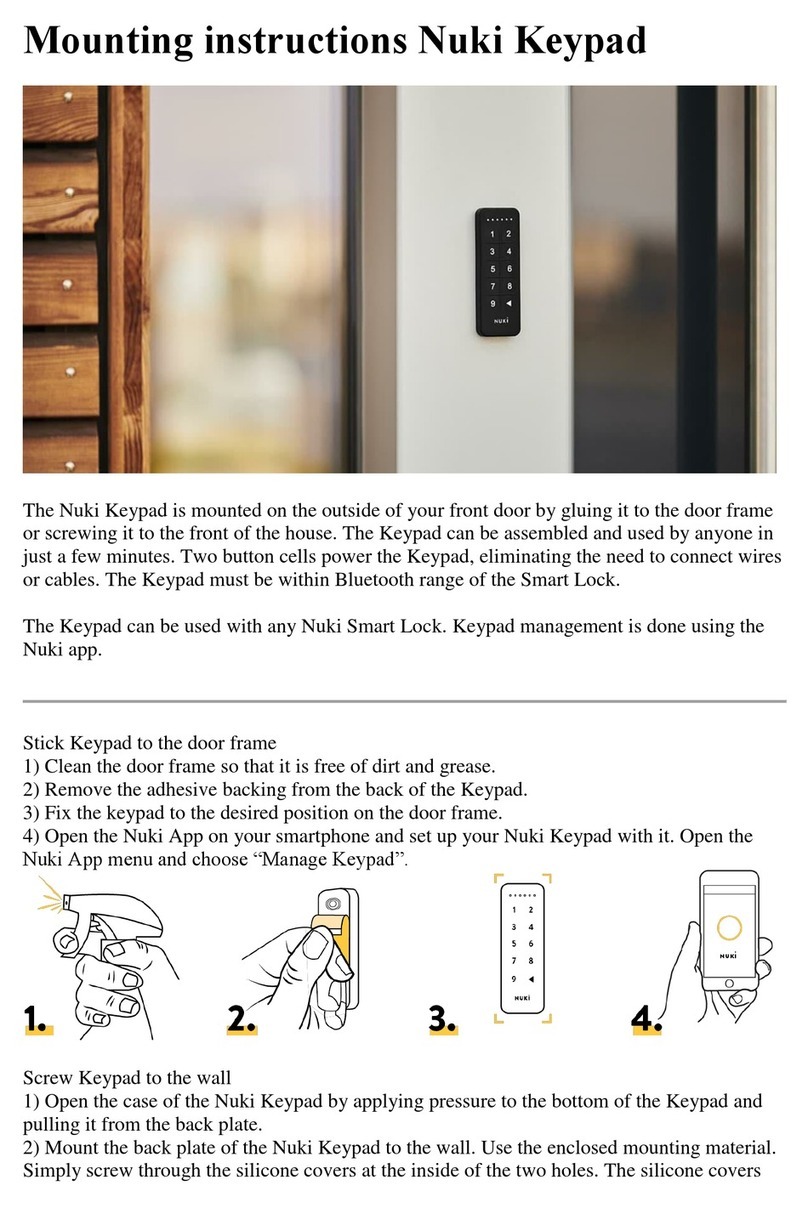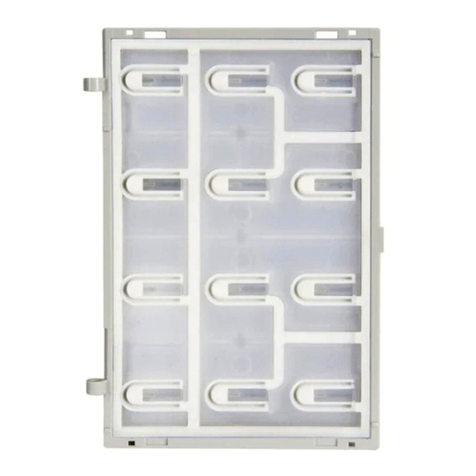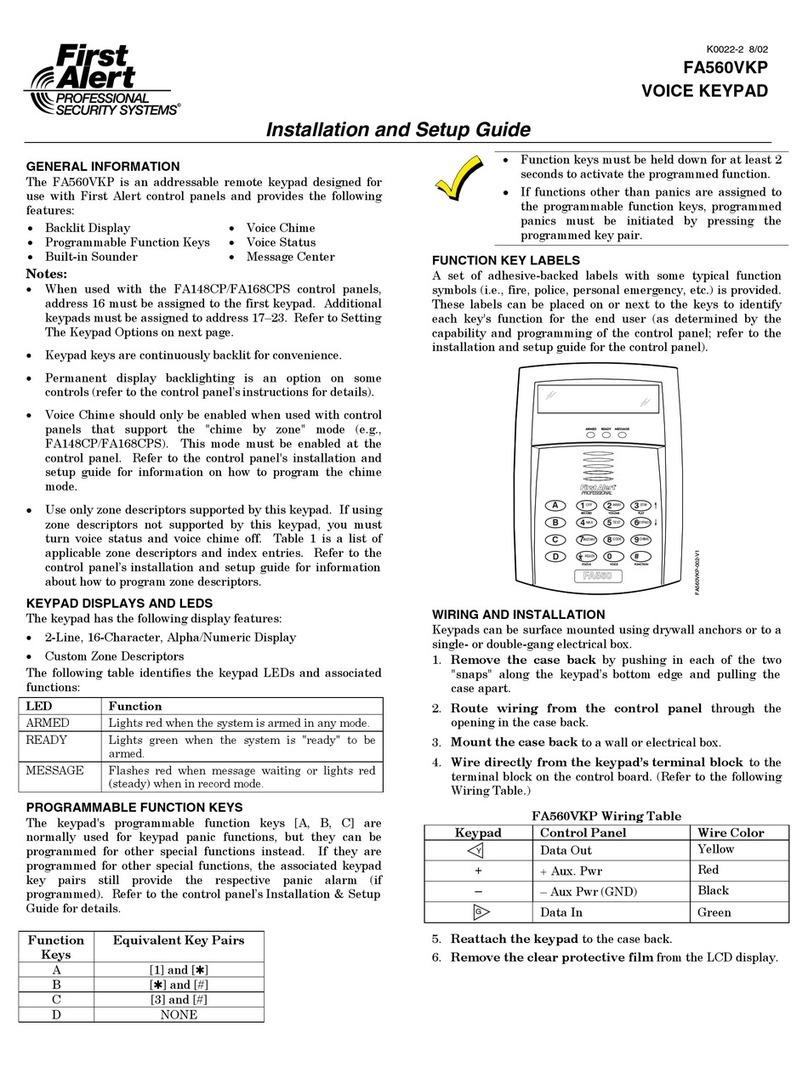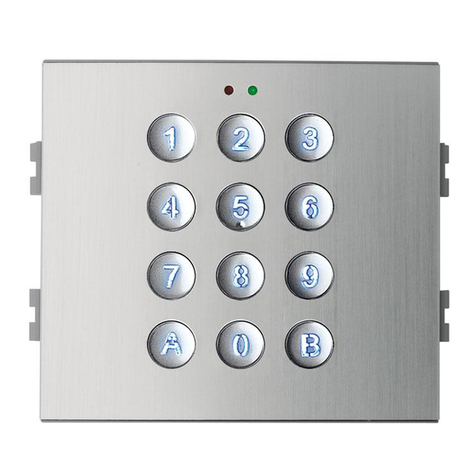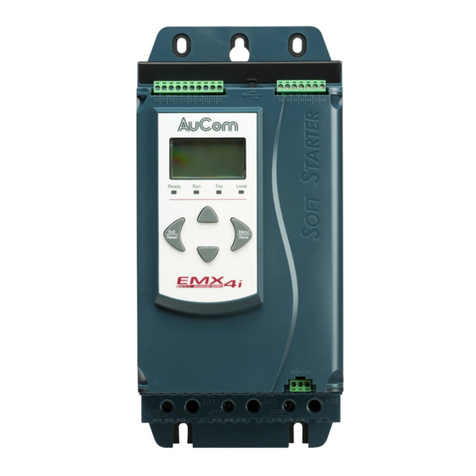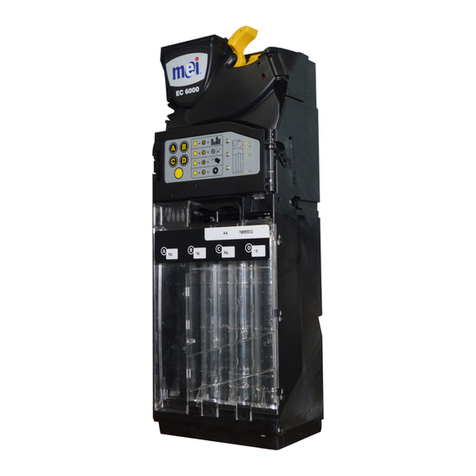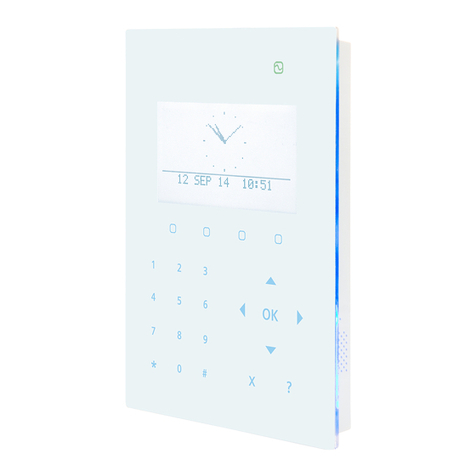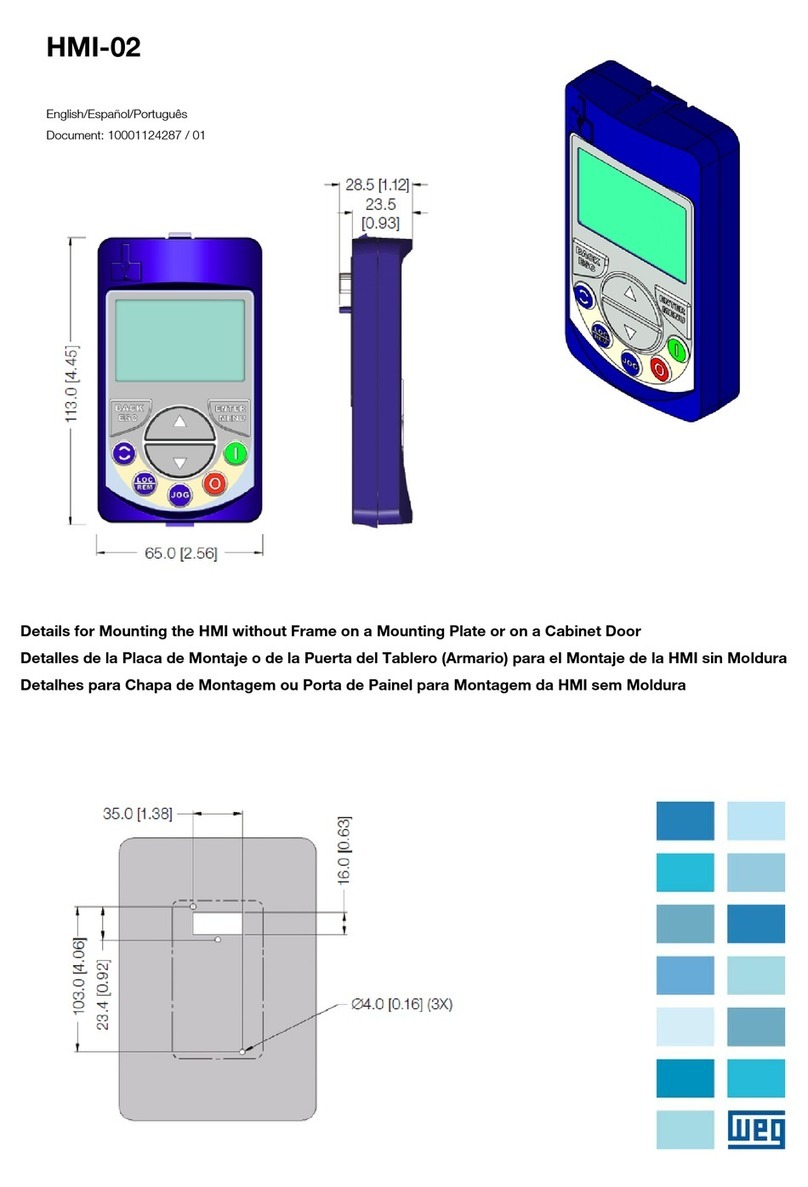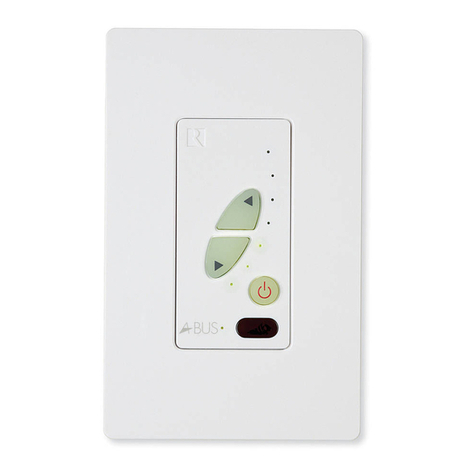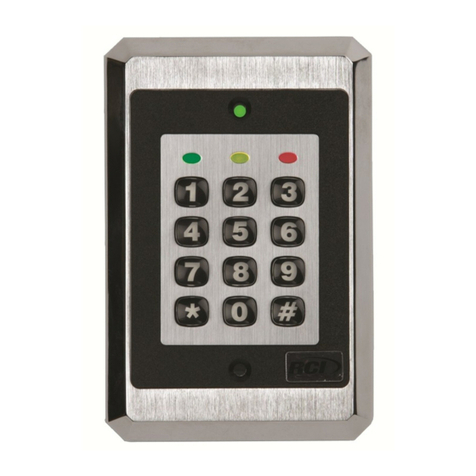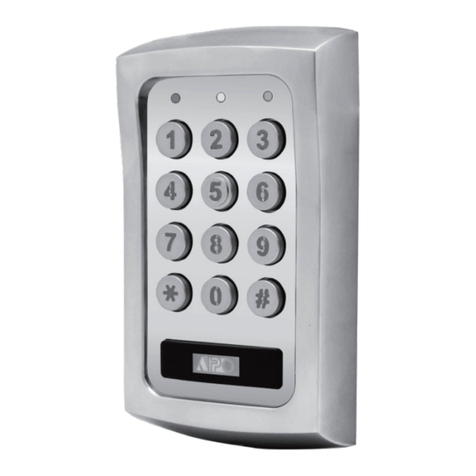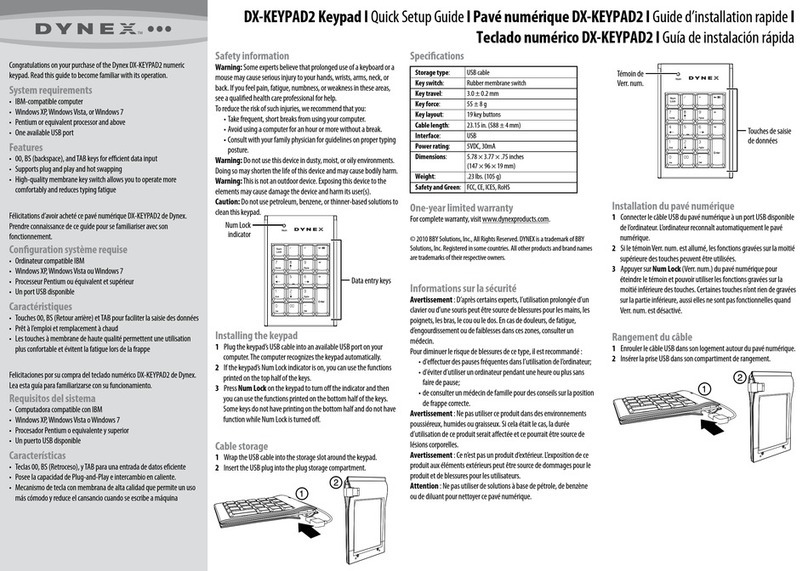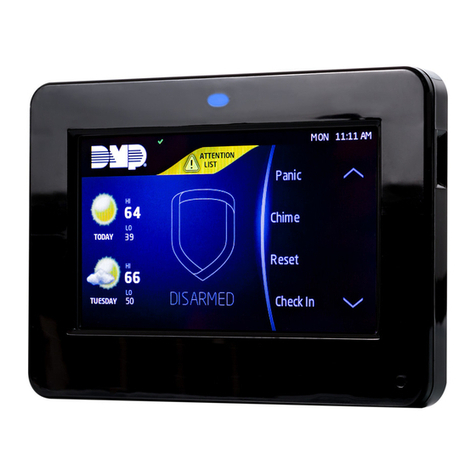Variazioni senza preavviso delle presenti informazioni non implicano responsabilità da parte AUREL. L’acquirente assume ogni responsabilità derivante dall’uso del prodotto.
AUR°EL S.p.A. Via Foro dei igli, 4 - 47015 Modigliana (FC) – I ALY Rev. A, 21-09-2001
el.: +390546941124 – Fax: +390546941660 Pag 2 di 2
http://www.aurel.it - email: aurel@aurel.it
CE Re erence
Inside the front half shell of the transmitter plastic container, there is a label which contains the device’s
identification data (product’s name, manufacturer, feed voltage and power consumption).
Technical eatures
Min Typ Max Unit
Carrier’s frequency 433.92 ± 0.15 MHz
Radiated power (E.R.P.) 0 dBm
Modulation OOK (On Off Keying)
Power consumption 7 15 mA
Operatine temperature -10 +55 °C
Dimensions 75 x 43.5 x 18.5 mm
Regulations compliance
TX-1C-5026, TX-2C-5026 e TX-4C-5026 transmitters comply with European Regulations ETS
300-220, ETS 300-683 and EN 60950.
his device complies with Part 15 of the FCC Rules. Operation is subject to the following two conditions: (1)
this device may not cause harmful interference, and (2) this device must accept any interference received,
including interference that may cause undesired.
Notice to user:
1. Changes or modifications not expressly approved by the party responsible for compliance could void the user's authority to
operate the equipment.
2. his equipment has been tested and found to comply with the limits for a Class B digital device, pursuant to part 15 of the
FCC rules. hese limits are designed to provide reasonable protection against harmful interference in a residential installation.
his equipment generates, uses, and can radiate radio frequency energy and, if not installed and used in accordance with the
instruction manual, may cause harmful interference to radio communications. However, there is no guarantee that
interference will not occur in a particular installation. If this equipment does cause harmful interference to radio or television
reception, which can be determined by turning the equipment off and on, the user is encouraged to try to correct the
interference by one or more of the following measures:
- Reorient or relocate the receiving antenna.
- Increase the separation between the equipment and receiver
- Connect the equipment into an outlet on a circuit different from that to which the receiver is connected.
-
Consult the dealer or an experienced radio/ V technician for help.
